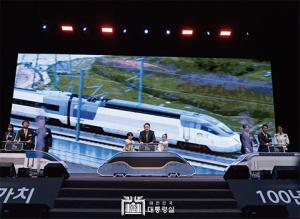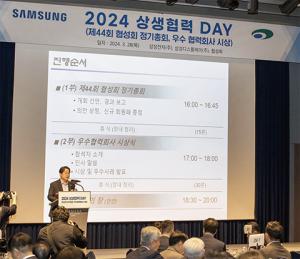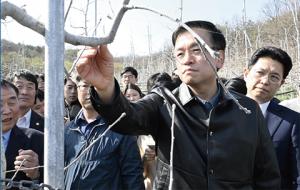 |
국내 최초로 산림복지의 정의와 개념을 바로세우다
“인간생애주기와 유사한 산림복지에 주목, 테마 별로 정리해 다양한 가치창조”
- 조계중 순천대학교 산림자원학과 교수/(사)자연환경해설가협회장(cho kye-joong)
“해설을 통해서 이해하고, 이해를 통해서 감상하고, 감상을 통해 보호한다.” 해설은 관련분야의 손을 잡고 상호 발전한다. 해설의 등장은 국민들의 문화, 숲, 무·유형의 문화재, 전설, 생태관광지에 대한 시각을 바꿔놓았고, ‘칼럼으로 읽는 세계명화’ 는 전문 분야를 취미로 연결하게 만들었다. 우리는 여기서 산림과 사람의 인생굴곡을 비슷하게 묘사해 놓은 학창시절 지리학 시간을 쉽게 떠올릴 수 있을 것이다. 따라서 이번에는 산림복지와 파생산업을 한국식으로 정의하고, 관계자들의 권익을 위해 헌신하는 산림 전문가 조계중 교수를 만나 인간의 삶과 상생하는 산림산업의 밝은 미래를 전망하는 시간을 가졌다.
해설학은 자연과 인간을 잇는 귀중한 징검다리
무라카미 하루키의 ‘노르웨이의 숲’에서는 일본의 지도책에 붙는 평범하고 딱딱한 설명이 지루했던 등장인물 미도리가, 주변경관과 동물 이야기를 스토리텔링하며 인기를 얻는 에피소드가 있다. 예술과 취미 분야에서 평론과 설명의 중간에 위치한 해설서 출간도 저자 뿐 아니라 그 분야의 대중적 인지도 상승에 기여한다. 미국에서는 이미 100여 개 이상의 대학이 정식 학과목으로 채택하였고 학문으로 정착한 ‘해설학’의 발전도 이와 밀접한 연관이 있다. 그럼에도 한국에서는 산림과 문화유산, 그 자원에 관한 해설학에 대해, ‘문화관광/문화유산해설’, ‘갯벌해설’, ‘바다해설’, ‘생태관광해설’, ‘숲해설’ 등 자격증신설로 붙게 된 각각의 이름으로 부르며 통일되지 않은 시각에서 접근하곤 한다.
이를 체계화하는 연구를 20여 년 간 지속하고 있는 순천대학교 산림자원학과 조계중 교수는 1990년대 초에 미국으로 건너가서 한국인으로서는 거의 최초로 이 학문을 전문적으로 수학한 바 있다. 귀국한 조 교수는 2002년부터 전국적으로 강의를 해 왔고, 현재 3학년 학생들에게 ‘해설학개론’을 개설하여 가르치며 해외에서 전문분야로 인정받는 해설학의 인지도 상승에 기여하고 있다. “해설이란 역사 유적지, 종교 성지, 고건축물, 사찰 등의 보호해야 할 소중한 우리자산의 소중함에 대하여 관광객들에게 그 가치를 알리고 인식시킴으로써 보호할 수 있도록 유도하는 것이다. 조 교수는 그런 의미에서 대한민국의 공원과 자원 관리의 한 부분도 해설의 범주에 들어간다고 단언한다. “산림자원, 공원관리, 문화유적지 관리자들은 해설가로 불린다. 그들은 방문객이 함부로 만지거나 훼손하면 안 된다는 경고문도 해 내지 못할 효력을 발휘하는 해설가들이다” 다만 조 교수는 이렇게 여러 분야로 나뉜 해설가 집단이 뭉치지 못하는 것을 아쉬워한다.
개선점이 있다면, “기관 간의 관점이나 행정적인 편의에 의해 분열되어 있는 해설의 통합이 시급하다.”는 점이다. 그러다 보니 국내 해설가들은 아직도 계약직이고 제대로 인정받고 있지 않았다. 하나의 대표 단체에서 각 분야가 나뉘었으면 한다. 그래서 2006년부터 자연환경해설가협회장으로 활동하면서 전문가를 양성하고 해설의 통합을 시도하고 있다. 그 안에서 자신의 전문 관심분야에 대한 해설을 하면 된다. ‘자원관리를 위한 도구’라고 정의되는 해설은 소중한 우리의 자원관리를 위한 도구이며, 그 자원이 바로 문화, 역사, 자연, 관광, 생태 등인 것이다” 조 교수에 따르면, 대부분의 관광지는 아무리 인터넷이 발달해도 사진과 글만으로는 모든 것을 알 수 없다. 특히 처음 가본 곳에서는 해설가의 안내와 설명에 의존하는 경향이 있는데, 능력 있는 해설가를 통해 견학에 대한 시간 분배와 정확한 정보 전달, 자연과 문화자원에 대한 소중함을 인식시키는 파급 효과를 기대할 수 있다.
앞으로도 해설학 종사자들의 권익과 학문/산업의 연계를 위해 힘쓸 것
해설가로서 활동사는 사람들이 단순한 소일거리를 위한 종사자로 인식되지 않도록, 조 교수는 해설가협회장으로서 이미 전국적으로 450여 명의 자연환경해설가들을 양성해 두었다. 또한 숲해설가 협회 전문위원으로서 서울, 광주·전남, 부산·경남, 대구·경북, 영동, 대전·충남지부 등 전국의 숲해설가들을 위해 사명감을 갖고 출장 강의를 지속하고 있다. 가장 의미 있는 활동 중 하나는 2011년 산림청의 의뢰로 ‘산림복지 개념정립 및 정책개발 연구’에 전념해 국내 최초로 산림복지의 개념을 정립한 것이다. 또 산림을 이용한 사회적 약자, 임산부, 노약자, 유아 등 인간의 삶에 접목한 생애주기별 나눔을 만들었고, ‘조계중의 생애주기별 숲체험 교실’을 만들어 숲 속에서 자연의 혜택을 받는 프로그램 커리큘럼으로 많은 이들이 접할 수 있도록 했다.
조 교수는 교육적 효과, 웰빙 등 건강에 미치는 숲의 영향에 대한 긍정적인 반응을 얻으며 중/고등학교에서의 직접적인 현장프로그램 체험 의뢰를 많이 받아 프로그램을 진행하고 있다. 지난해에는 지자체로부터 노년층을 대상으로 숲치유프로그램 운영 의뢰를 받아 ‘숲노치원’으로 명명하여 해설가들과 함께 직접 진행하기도 했다. 직접 산에 갈 수 없는 이들을 위해서는 휴양림에 가고, 이동이 불편한 연령층을 위해서는 전문 인력과 버스를 대절해 참가시키기도 한다. 숲과 관련된 게임, 그림, 텃밭가꾸기 프로그램을 진행 중이며, 사회적으로 고립된 조기 퇴직자 등의 우울증 치료 요법으로 재교육, 직업 재창출을 위한 시스템을 정착시키고자 한다. 조 교수는 2014년 10월 산림청 예비 사회적기업 승인을 얻은 상태다. “올해부터는 이 기업에 젊은이를 고용해 교육하고 일자리로 연결할 예정이다. 1-2월 중으로 최소 5-10명을 고용하고 취업 준비생과 조기 퇴직자 중에서 선정할 것이다” 또한 산림청에서 숲해설가 대회를 열 때, 1-3위 입상자는 세계해설학회의 참가비용을 지원받는 시스템도 조 교수의 건의로 이루어진 일이다. 조 교수는 1995년부터 세계해설학회에 참여한 경험을 토대로, 세계해설학회 한국대표로 활동하면서 2008년에는 국내 최초로 세계해설학회를 국내에서 개최하였다.
2년간의 준비를 거쳐 6년만인 2014년 재개최에 성공해, 아시아 최초이며 유일한 2회 개최 국가가 바로 한국이라는 기록을 남기기도 했다. 20년 간 꾸준히 학술 발표를 해 온 노력과 연구가 바탕이 된 결과로서 조 교수는 세계해설학회로부터 ‘올해의 학회’ 대상을 수상하는 영광도 누렸다. 조 교수는 이러한 이론과 실전을 바탕으로 한국에 산림복지단지를 구성하겠다는 원대한 포부를 갖고 있다. “생애주기별 단계로 산림과 인간의 삶을 결합한 산림복지 사업을 진행할 예정이다. 탄생기에는 아기탄생목 심기와 태아를 위한 프로그램을, 유아기에는 양육활동을 지원하는 숲속유치원을, 아동청소년기에는 산림학교와 그린캠프를, 청년기에는 레저와 문화활동을, 중장년기에는 트레킹과 휴식 등 치유기능을 강조하고, 노년기는 산림 속에서의 요양을, 회년기에는 자연친화적 장묘서비스까지 가능하다.”
그 외에도 조 교수는 문화사업, 민간참여촉진사업, 해설을 통한 자원봉사 사업, 레포츠와 요양을 기반으로 한 건강증진사업, 운동요법과 교통약자지원 트레킹, 체류형 관광지원사업에서 귀농, 자연환경을 이용한 재생에너지 사업의 연관성을 조목조목 짚어준다. 천혜의 산림환경을 이용한 새로운 창조경제 실현을 이룬다는 믿음은 이제 확신으로 바뀌게 될 것이다.
Setting the right concept of forest welfare for the first time in Korea
Focusing on the similarity between life cycle and forest welfare, arranged by themes to create a variety of values
- Cho Kye-joong, the professor of the Department of Forest Resources at Sunchon National University, and the president of The Natural Environment Interpreter's Association
"Understand through interpretation, appreciate through understanding, and protect through appreciation." Interpretation co-develops in cooperation with the related fields. The advent of interpretation changed our views on culture, forest, tangible & intangible cultural assets, legend and eco-tourism. 'Famous Paintings of the World read by Column' connected the professional field with hobby. It can remind us of the geography class that depicts our life similar to forest. Professor Cho defined forest welfare and its derivative industry in a Korean style and is devoting his life to the rights and interests of the related people. Power Korea has met Cho and heard about the bright future of the forest industry that coexists with our life.
Interpretation connects human to the nature
In the book of Haruki Murakami's Norwegian Wood, Midori gets fed up with the plain and boring explanation in the geography textbook and tells herself about the surrounding scenes and stories about the animals that live there. An interpretational book, which can be placed in the middle between criticism and explanation in the art and hobby fields, contributes to increasing popularity in the related fields.
More than 100 US universities are running the department as a formal curriculum and the development of interpretation is closely related to this. But interpretation is approached in incoherent point of views in Korea by calling each certified genre as 'culture tour/cultural heritage interpretation', 'mud flat interpretation', 'ocean interpretation', 'eco-tourism interpretation', and 'forest interpretation'. Cho has been studying to systematize these fields for 20 years. He went to the US in early 1990s and studied the related fields probably as the first Korean. When he came back, he started to give lectures nationwide from 2002, and is currently teaching 'Introduction to Interpretation' to the third year students in university. Cho says "interpretation is to explain how important our assets such as historical relics, religious sites, old buildings and temples so that tourists can understand and protect the assets. In that terms, part of Korea's park and resource managements belong to interpretation category.
The managers of forest resources, park management, and cultural remains are called interpreters. They can do more than the warnings which tells tourists not to touch or destroy the assets. But it is regretful that these interpreter groups are not systematized due to each related department's different point of view and administrative convenience." Because of this fact, the Korean interpreters are still treated as contract workers. That is why Cho is active as the president of The Natural Environment Interpreter's Association to foster specialists and to unite the field so that the interpreters do their specialized field within the integrated boundary. Interpretation is defined as the tool for resource management that includes culture, history, nature, tourism and ecology. Cho says that no matter how far the internet has developed, photos and texts cannot provide everything we should know. People can rely on talented interpreters to know the right information about the nature and our cultural assets.
For interpreter's rights and interests and for academic-industrial liaison
Cho does not want interpreter's job as trivial job but has already fostered 450 professional natural environment interpreters nationwide. Also, as a member of The Forest Interpretor's Association of Korea, he gives lectures for them nationwide. But his most meaningful achievement is that he defined the concept of forest welfare by carrying out 'Research for Defining the Concept of Forest Welfare and Policy Development' requested by Korea Forest Service in 2011. He made divisions for disadvantages, pregnant women, elderly people and infants according to our life cycle by using forest. He also made 'Cho Kye-joong's Life Cycle Forest Experience Class' so that many people can benefit from the nature. He received positive feedback for his education about forest that creates educational effect and wellbeing and is currently carrying out field experience programmes for middle and high school students. He was requested from local government to run a forest healing programme for elderly people and he established 'Soopnochiwon' to implement the programme with the other interpreters. Those who cannot climb can go to recreational forest, and those who have difficulty in moving can participate by using a bus. Forest related game, painting, vegetable garden programmes are running and Cho is planning to settle a system for depression healing, reeducation and job creation for those who lost job or retired early.
Cho was approved as a provisional social enterprise from Korea Forest Service last October 2014. Cho said "I will hire young people to educate and to give a job this year. I will hire 5 to 10 people until February and choose among job applicants and early retirees." Cho asked Korea Forest Service to give supporting fund for top three winners of Forest Interpreters's Competition so that they can participate in the International (Forest) Interpreter's Association. Cho has been participating the association since 1995 and active as the representative of Korea and held the meeting in Korea in 2008. He succeeded to hold the meeting again in 2014 in Korea as the first Asian country and the only country which hold the meeting twice. Cho was awarded the grand prize of 'This Year's Association' from the International Interpreter's Association for his 20 year contribution. Based on his theory and experience, Cho wants to build a forest welfare complex in Korea. Cho said "I will carry out forest welfare projects that combine our life cycle with forest such as the baby tree planing programme in the period of birth, the forest nursery school programme in the infant period, the forest school and green camp programmes in the children's period, leisure and cultural activity programmes in the youth period, the trekking and healing programmes in the middle age period, the convalescence programme in the elderly period, and the eco-friednly funeral service programmes at the end."
Cho also mentioned the related fields such as cultural projects, private participation promotion projects, volunteer service projects through interpretation, health improvement projects based on leports and convalescence, exercise therapy & trekking for those who have difficulty in moving, stay type tourism supporting project, return-to-farm, and regeneration energy project by using national environment. The belief that to implement Creative Economy by using national forest environment will turn into conviction.
정재헌 기자 jjh05220@naver.com







